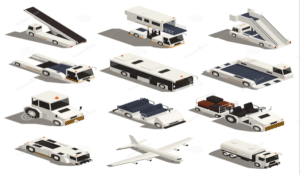
How To Become A Master Systems Integrator – Course
What You Will Learn
Introduction
Learn all about airport systems from the carpark until you are in the air, and Back.

Airports are fun, especially when you walk through and airport and know how everything works. Every airport I go to, when my bag dissapears from the check-in desk, I know where and how it is going to be handled, right up until it is placed on the Aircraft.
I view the Televisions and other displays that shows me where my check-in desk is, where my gate is and what happens when I give my boarding pass to the airline agent at the gate. I know this system, how it works, and where it gets its information from. What a great feeling.
As I travel through the airport I hear automated announcements telling me my flight is ready for boarding, I know this system and how it gets its information and how it is built. The same system can be used in case of an emergency, and I know how this works too.
Mostly going un-noticed is the Closed Circuit Television System. This is where airport security and management can see what is happening both in the Public Areas and Non-public areas. Did you know that if you carry a bag in an airport, set it down and walk away, that automatic sensors within the Closed Circuit Television System can spot this?
If you are travelling internationally you will go through Customs and Immigration. Ever wonder how these systems work? This course will describe these systems.
Did you drive to the Airport and park your car? Did you ever wonder how the Car Park knows how many spaces are available? Did you ever wonder how the entry and exit systems work? This course will tell you how they work.
Airports have elaborate Power and Mechanical Systems that control the temperature, carry you around the terminal using moving walkways, escalators and elevators. Aside from the obvious, do you know why there are moving walkways? They have interesting interfaces and design details which are described in this course.
So, you have travelled through the airport and given your boarding pass to the airline agent, and now you enter the Passenger Loading Bridge. Ever wonder how these devices work? Did you know that in or around the Passenger Loading Bridge there is electrical power provided to the Aircraft? And Air Conditioning?
Looking out the window at the Boarding Gate, you see a variety of trucks moving around, some carrying baggage, some catering and some delivering fuel. Sometimes the airport has a fueling system that connects from the ground to the Airplane, ever wonder how the airport charges for the fuel? Take the course and find out.

Finally you are on the aircraft. The pilot tells you they are 3rd in line for take-off, ever wonder who and how this decision is made? Ever wonder what all the lights and paintings are on the taxi-way and runway are used for? Ever wonder what systems are used to help in the management of the taxi-way and runway? The course provides this information too.
You are in the air, ever wonder how the path to the next airport is made? Ever wonder how the aircraft communicates with people on the ground. Every wonder how the aircraft comes in for a landing or takeoff? Yes, this is included in the course.
Well there you have it, from the time you get to the airport until you are in the air, and back again, all of these systems are provided in the course.

Yes, airports can be fun. Even if you are not an Engineer, even passengers can learn about airports.
See you in the course. Enjoy and have fun learning.




